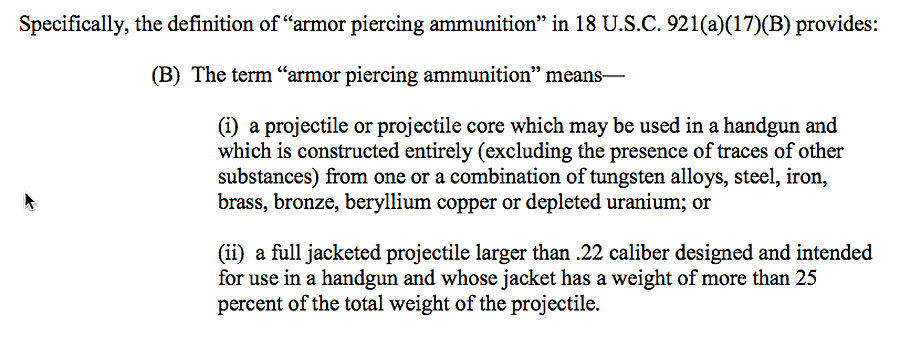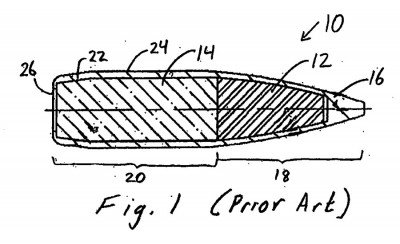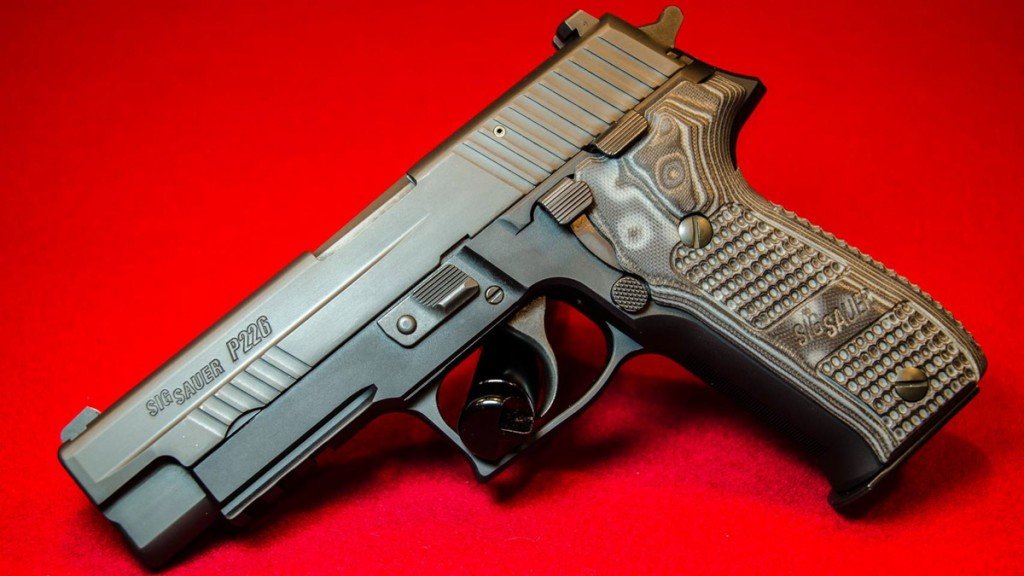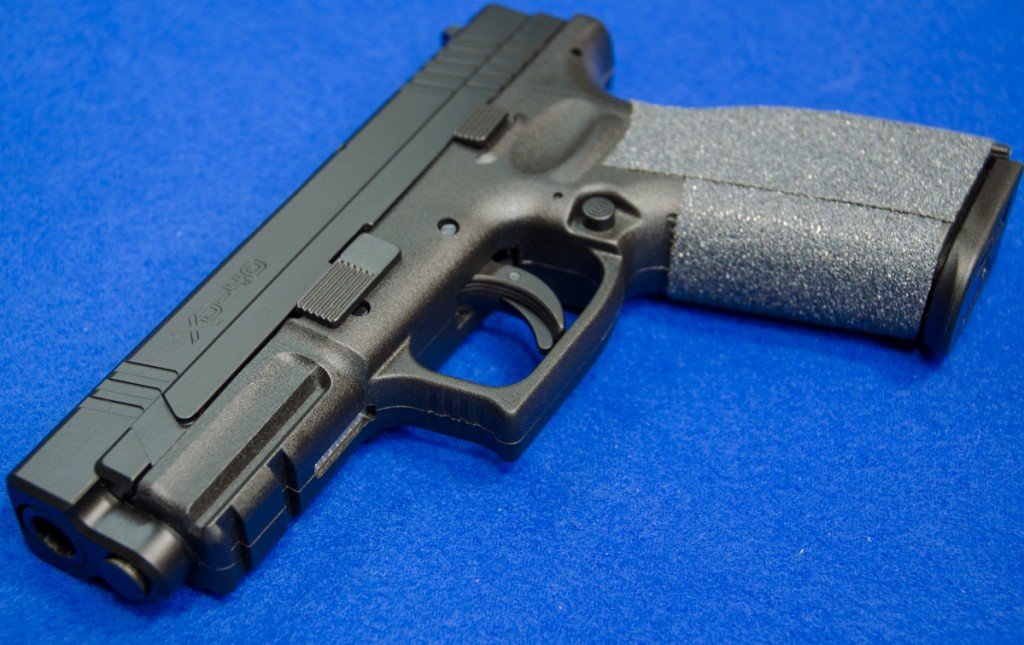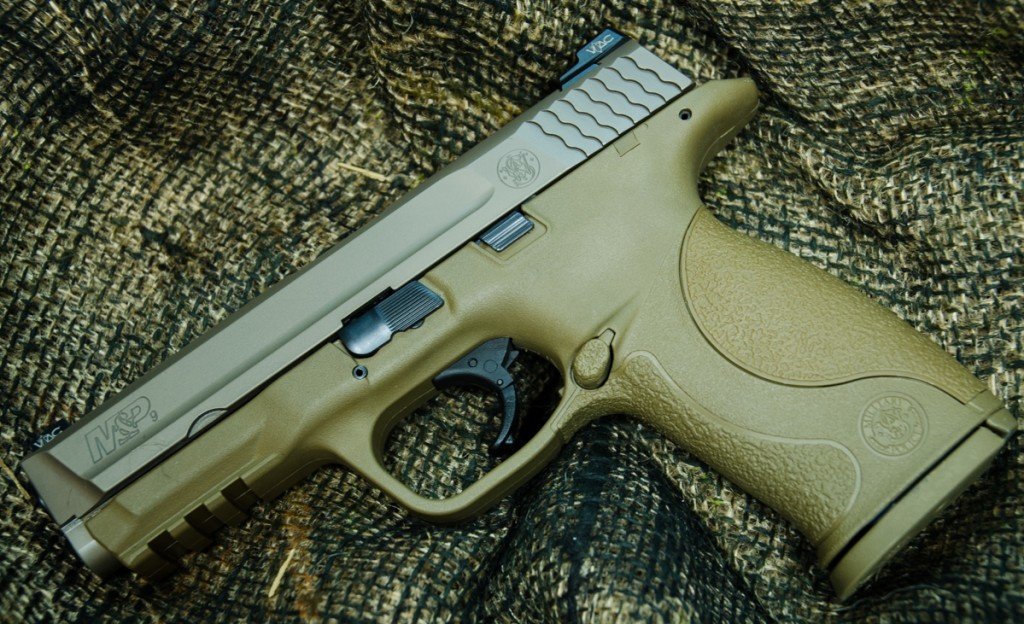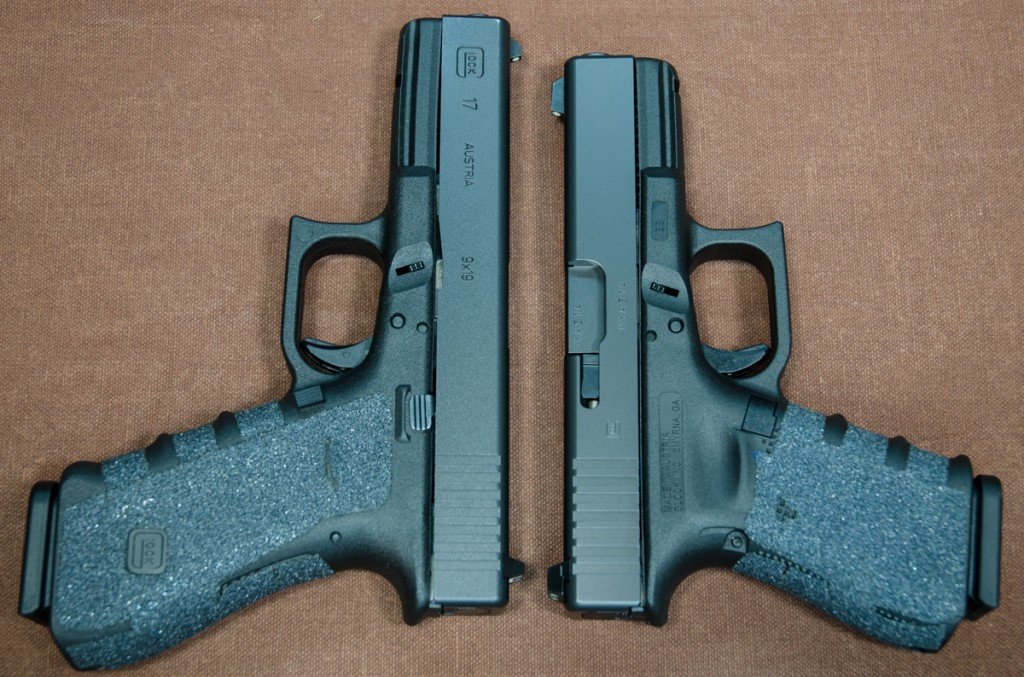Friday, March 13, 2015
Tuesday, March 10, 2015
BREAKING NEWS: NRA Forces Obama to Wave White Flag on Proposed Ammo Ban … For Now
<
BREAKING NEWS: NRA Forces Obama to Wave White Flag on Proposed Ammo Ban … For Now
Fairfax, Va. – The National Rifle Association (NRA) was instrumental in stalling the Obama Administration’s initial attempt to ban commonly used ammunition for the most popular rifle in America, the AR-15. The announcement that the Bureau of Alcohol, Tobacco, Firearms and Explosives (BATFE) will suspend its proposed framework to ban M855 ammunition validates the NRA’s assertion that this effort was nothing more than a political maneuver to bypass Congress and impose gun control on the American people.
"Today’s announcement proves what we have said all along – this was 100% political. President Obama failed to pass gun control through Congress, so he tried to impose his political agenda through executive fiat. But every gun owner in America needs to understand Barack Obama’s hatred of the Second Amendment has not changed," said Wayne La Pierre, Executive Vice President of the National Rifle Association.
Chris Cox, Executive Director of NRA-ILA criticized the dishonest campaign to ban this common ammunition: “The lies used to justify the ban were shameful. This proposal was never about law enforcement safety – it was about the Obama Administration’s desire to pander to billionaire Michael Bloomberg and his gun control groups. Since they haven’t been able to ban America’s most popular rifle, they are trying to ban the ammunition instead.”
Since the BATFE announced its plan to ban commonly used ammunition less than a month ago, the NRA rallied its five million members and tens of millions of supporters across the country in strong opposition. In addition, the NRA worked with congressional leaders in both the U.S. House and Senate to oppose this misguided proposal.
“The NRA would like to thank House Judiciary Committee Chairman Bob Goodlatte, Senate Judiciary Committee Chairman Chuck Grassley and House Commerce, Justice, Science Appropriations Subcommittee Chairman John Culberson for leading the fight against this unconstitutional attack on our Second Amendment freedoms,” continued Cox. “This was a significant victory for our five million members and tens of millions of supporters across the country.
“Make no mistake, this fight is not over. We will remain vigilant and continue to fight against President Obama’s attempt to dismantle the Second Amendment,” concluded LaPierre.
To view the congressional letters to BATFE, along with the Member signatures, click here and here.
To view recent op-ed in the Daily Caller by Chris Cox on the proposed ammunition ban, click here.
Established in 1871, the National Rifle Association is America's oldest civil rights and sportsmen's group. More than five million members strong, NRA continues to uphold the Second Amendment and advocates enforcement of existing laws against violent offenders to reduce crime. The Association remains the nation's leader in firearm education and training for law-abiding gun owners, law enforcement and the armed services. Be sure to follow the NRA on Facebook at NRA on Facebook and Twitter @NRA.
Monday, March 9, 2015
Ammo Ban? How We Get Facts Wrong on M855
I’m about to make a bunch of my friends really uncomfortable. Those
of us who believe strongly in Second Amendment rights have to stand
united in our opposition to the proposed reclassification of M855 (or
Green-Tip) ammo. We cannot fight this ban by misreading regulations or
engaging in wishful thinking. I’m about to pick apart some of the most
vocal arguments I’ve heard in the last week. I want to make it clear–I’m
doing this in support of this fight. We will not win by butchering
facts.
And yes, we do have a lot more at stake in this argument than M855. Read on. Read carefully. This is about to get complicated. There are two key things to know now:
DOJ spokesman Patrick Rosenbush said in a statement:
Interestingly, the original Gun Control Act referenced above contained a provision that allowed some “armor piercing” rounds escape the ban. The GCA took into account intent. If a round was intended to be fired from a rifle, it was exempt from the handgun provision. There were few rifle caliber pistols at that time. Not anymore. The incredible popularity of the AR pistol has (the ATF argues) increased the chance that LEOs will face criminals with more easily concealed rifle caliber pistols capable of shooting through their inadequate vests.
The M855’s bullet is comprised of three main components: the jacket, the lead core, and the steel core.
Yes. You read correctly. The M855 has a steel core. Green tip. Steel core. I’ve listened to a lot of conflated nomenclature in the last week that wishfully combines the two into steel-tip, in an attempt to skirt the “core” definition. It doesn’t help that M855A1 does have a steel tip–but that’s a different essay.
I can’t tell you how many people I’ve argued with in the last week about this very issue. All of the arguments go something like this: “The M855 has a lead core with a steel tip.” Too many of us want to simply ignore what the statement above says about projectiles and cores. Instead, we read what we want to read. And if you look at the image on the right, you will see that the M855 actually has a tip comprised of its jacket. No steel.
Consider this well intentioned letter:
There is no article preceding the noun “core.” Nor is there a indefinite article. Instead, we’re looking at a a grammatical absence known as the “zero article,” which essentially means that the noun lacks an identifier. The noun, then, becomes indefinite. This is not about just one core. The projectile in this equation can be made up of multiple cores.
While I agree with the “one core” wishful thinking from a philosophical perspective, it doesn’t change the fact that the component parts of the M855 projectile have a long paper trail that includes actual names for these parts.
Semantics. Grammar. Syntax. They matter. I know I’m the editor of a blog, and I play fast and loose with language–but I’m pulling rank in this argument. On behalf of all of us who love M855, I want to advise against anyone using the one-core line of attack. We can’t fight lawyers and politicians by making up our own terms for items that have already been named.
I’m having difficulty putting my hands on the patent drawings for the original SS109 projectile, which would later be designated the M855. But there are numerous patents that include descriptions of bullets based on the bullet. Here’s one (emphasis added):
Follow me through this people. Mr. Lott, in constructing his argument for Fox News, has chosen to leave out the part of the ruling that does define M855. The question of the steel core. I can understand why Lott and the editors of FoxNews.com screwed up. This is complicated. This is way more complicated than most Americans, firearms enthusiasts or not, are capable of understanding.
Even our long-time friend and ally, Alan Gottlieb–arguably one of the most ardent defenders of freedom I could name–seems confused about the issue. Here’s his contribution to FoxNews.com’s fair-and-balanced article:
“Almost any hunting rifle bullet [capable of being fired from a pistol platform] will go through [type II soft] body armor, so you could [if we were to ignore the component classification of core design and jacket weights] prohibit almost any rifle bullet [capable of being fired from a pistol platform]. ” What he’s saying is that M855 is on the chopping block, and if we were to use the ability to puncture type II soft body armor as a rule, than all 5.56 and .223 would disappear.
In other words, we do have something to actually fear. The BATFE’s attempt to choke off the supply of available M855, using the LEOPA’s language, is nothing. There could be far worse to come.
Consider this. If the M855 ban passes muster this time, based on the skewed logic that these bullets pose an extraordinary risk to LEOs, than that decision could be used as precedent to widen the ban and ban all rifle bullets that could be fired from pistols. Goodbye .223, 7.62×39, 5.56, .30 Carbine, .308, 5.45…. How long is this list?
If you would like to contact the various powers-that-be, use an argument that will withstand basic tests of logic. This is one of the best letters I’ve seen to date, and it addresses the real issue: banning M855 in the name of officer safety simply makes no sense.
Allow your voice to be heard clearly. Don’t give in. Never give in. Stand. Fight. But for our sake, make sure you know what the hell you are talking about.
And yes, we do have a lot more at stake in this argument than M855. Read on. Read carefully. This is about to get complicated. There are two key things to know now:
- M855 ammunition does have a steel core. Keep your finger off the comment button until you’ve read why.
- There’s a lot more at stake than just M855.
The proposed ban of M855 (SS109)
Let’s begin with the basics. The BATFE has announced that it intends to revoke the exemption previously granted to M855, more commonly known as Green-Tip, .223. More specifically, they’re looking for a working guide for classifying ammunition as armor piercing.DOJ spokesman Patrick Rosenbush said in a statement:
“Under the Gun Control Act [of 1968], Congress acted to protect law enforcement from armor piercing ammunition that can be fired from a handgun. The law explicitly authorizes the Attorney General to exempt ammunition ‘primarily intended for sporting purposes.’ No action has been taken –ATF is simply proposing, and requesting public comment on, a framework to enforce the law that Congress passed and provide guidance for the industry through a transparent process for making exemption decisions.”Let’s look closely at the BATFE’s rationale. The M855 round is armor piercing. No thinking human being can dispute this. M855 is easily capable of penetrating Type I, IIA, II, and IIIA. Even when fired from most AR pistols, the M855 can penetrate some types of armor. It is pointless (and counter productive) to argue that–because it can be stopped by Type IV armor–it isn’t armor piercing (an argument I’ve heard more than once this week). Most police officers wear IIIA vests, at most,–and it is their safety that is (dubiously) in question.
Interestingly, the original Gun Control Act referenced above contained a provision that allowed some “armor piercing” rounds escape the ban. The GCA took into account intent. If a round was intended to be fired from a rifle, it was exempt from the handgun provision. There were few rifle caliber pistols at that time. Not anymore. The incredible popularity of the AR pistol has (the ATF argues) increased the chance that LEOs will face criminals with more easily concealed rifle caliber pistols capable of shooting through their inadequate vests.
Enter in the LEOPA of 1985
Concerned that the GCA of 1968 left ambiguity in this question of intent, lawmakers revisited the issue in the 1980s. The Law Enforcement Officer Protection Act removed the question of intended use and replaced it with this articulate definition.The M855’s bullet is comprised of three main components: the jacket, the lead core, and the steel core.
Yes. You read correctly. The M855 has a steel core. Green tip. Steel core. I’ve listened to a lot of conflated nomenclature in the last week that wishfully combines the two into steel-tip, in an attempt to skirt the “core” definition. It doesn’t help that M855A1 does have a steel tip–but that’s a different essay.
I can’t tell you how many people I’ve argued with in the last week about this very issue. All of the arguments go something like this: “The M855 has a lead core with a steel tip.” Too many of us want to simply ignore what the statement above says about projectiles and cores. Instead, we read what we want to read. And if you look at the image on the right, you will see that the M855 actually has a tip comprised of its jacket. No steel.
Consider this well intentioned letter:
To Whom It May Concern:I oppose reclassifying M855 ammunition as “armor piercing.” Because of the high lead-content of its bullet, M855 does not meet the BATFE’s own definition of armor piercing ammunition.
The “high lead-content” has absolutely nothing do with anything.
Or worse, this one:
To Whom it May Concern:I am writing to comment on the proposed determination regarding SS109/M855 .223/5.56 ammunition.Based on the language used within 18 U.S.C. 921(a)(17)(B), I believe that this ammunition is, in the first place, improperly classified as armor piercing:[…]First, as can be seen in Figure 1, the core is NOT constructed ENTIRELY of any of the listed materials, but instead consists of a two-part core comprised of lead and steel.
The mistake is more subtle. “…the core….” But honestly: “I believe”? This part of the argument isn’t about opinion.
Here’s the crux of the biscuit:
“a projectile or projectile core….”
You will note the omission of the indefinite article “a” between the words “or projectile core.” Had there had been a limiting constraint put on the word core, like “one” core, or “the” core, we might be able to argue against the existence of a steel core. But we can’t. No matter how you cut up that single description, the M855’s projectile fits the bill.There is no article preceding the noun “core.” Nor is there a indefinite article. Instead, we’re looking at a a grammatical absence known as the “zero article,” which essentially means that the noun lacks an identifier. The noun, then, becomes indefinite. This is not about just one core. The projectile in this equation can be made up of multiple cores.
While I agree with the “one core” wishful thinking from a philosophical perspective, it doesn’t change the fact that the component parts of the M855 projectile have a long paper trail that includes actual names for these parts.
Semantics. Grammar. Syntax. They matter. I know I’m the editor of a blog, and I play fast and loose with language–but I’m pulling rank in this argument. On behalf of all of us who love M855, I want to advise against anyone using the one-core line of attack. We can’t fight lawyers and politicians by making up our own terms for items that have already been named.
I’m having difficulty putting my hands on the patent drawings for the original SS109 projectile, which would later be designated the M855. But there are numerous patents that include descriptions of bullets based on the bullet. Here’s one (emphasis added):
Examples of jacketed, boat-tailed bullets can be found in small caliber, 0.5 inch and under, penetrator projectiles used by military forces worldwide. For example, the United States and NATO military forces use vast quantities of M855 cartridges containing 62 grain penetrator bullets, one of which is depicted generally at 10 in FIG. 1. As shown in FIG. 1, the M855 bullet 10 has two aligned cores12 and 14 enveloped by a brass jacket 16. A steel core12 is located in a nose section 18 of the bullet 10 and a 32 grain lead core 14 is swaged into a rear section 20. The bullet 10 has a heel that is tapered to form a boat-tail 22, which provides the bullet 10 with ballistic stability and improved aerodynamic performance. In this case, the boat-tail 22 extends from a bearing surface 24 of the bullet 10 to a base 26 of the bullet 10. At a total weight of 62 grains, the M855 bullet 10 has the kinetic energy required to penetrate a 10 gage steel plate when fired from a distance of 600 meters.If you’re keeping score at home, note the inclusion of these phrases: “the M855 has two aligned cores”, “steel core”, “lead core.” In other places, you’ll find phrases like “front core,” too. We will not win an argument–any argument–by attempting to redefine the word core, or by attempting to limit the number of cores a single bullet can contain. Case in point:
Cutting through our own bullshit
Here’s a subtle lie that’s being perpetuated on FoxNews.com:“The law, which was passed in 1986, gives the agency authority to ban bullets that are ‘constructed entirely (excluding the presence of traces of other substances) from one or a combination of tungsten alloys, steel, iron, brass, bronze, beryllium copper or depleted uranium.’”The article’s author, Maxim Lott, is guilty of a very serious infraction. The law does cover “bullets that are ‘constructed entirely (excluding the presence of traces of other substances) from one or a combination of tungsten alloys, steel, iron, brass, bronze, beryllium copper or depleted uranium,” but that isn’t the M855. That is in no way the M855. M855 isn’t “constructed entirely” of any one thing. Those bullets exist, but are not M855. And pretending, in print, that this is what we’re fighting about makes it harder for us to win this fight.
Follow me through this people. Mr. Lott, in constructing his argument for Fox News, has chosen to leave out the part of the ruling that does define M855. The question of the steel core. I can understand why Lott and the editors of FoxNews.com screwed up. This is complicated. This is way more complicated than most Americans, firearms enthusiasts or not, are capable of understanding.
Even our long-time friend and ally, Alan Gottlieb–arguably one of the most ardent defenders of freedom I could name–seems confused about the issue. Here’s his contribution to FoxNews.com’s fair-and-balanced article:
“Almost any hunting rifle bullet will go through body armor, so you could prohibit almost any rifle bullet with this. This is the administration redefining the law on its own.”On the surface, Gottlieb appears mistaken about the language of the ban. We’re talking about pistol rounds, not rifle rounds. The M855 began its life as a rifle round, but now can be fired from an AR pistol. Still, I give Gottlieb more credit than I do most mainstream journalists. And I think I see a more worrying message hidden in Gottlieb’s statement. At the risk of attempting to speak for Gottlieb, which I would never presume to do, I will explain what his quote may imply.
“Almost any hunting rifle bullet [capable of being fired from a pistol platform] will go through [type II soft] body armor, so you could [if we were to ignore the component classification of core design and jacket weights] prohibit almost any rifle bullet [capable of being fired from a pistol platform]. ” What he’s saying is that M855 is on the chopping block, and if we were to use the ability to puncture type II soft body armor as a rule, than all 5.56 and .223 would disappear.
In other words, we do have something to actually fear. The BATFE’s attempt to choke off the supply of available M855, using the LEOPA’s language, is nothing. There could be far worse to come.
Consider this. If the M855 ban passes muster this time, based on the skewed logic that these bullets pose an extraordinary risk to LEOs, than that decision could be used as precedent to widen the ban and ban all rifle bullets that could be fired from pistols. Goodbye .223, 7.62×39, 5.56, .30 Carbine, .308, 5.45…. How long is this list?
So what do we do?
We continue to fight. We protest the reclassification of M855, if it indeed gets passed. We plan our arguments more effectively. If we attack the logic of this ban based on our own wishful thinking, we deserve what we get.If you would like to contact the various powers-that-be, use an argument that will withstand basic tests of logic. This is one of the best letters I’ve seen to date, and it addresses the real issue: banning M855 in the name of officer safety simply makes no sense.
Allow your voice to be heard clearly. Don’t give in. Never give in. Stand. Fight. But for our sake, make sure you know what the hell you are talking about.
Top 5 Handguns for Bugging Out
You have only a few minutes to gather the family, grab what you can
carry and get out. You don’t know when you’ll be back. You have to rely
on what you can carry on your body – no guarantee that you’ll even make
it far in your vehicle. The classic bugout scenario. SHTF. Sound
farfetched? Maybe, if you’re thinking about the zombie apocalypse or
invaders from Mars. But what about a natural disaster, a man-made
disaster, or large scale loss of civil structure? All of these things
have happened on various scales in the past, and all will almost
certainly happen again… on some scale. You have room for only one
handgun and some ammo. What do you take?
I am presenting this list in countdown order, so we’re going to start from the bottom. With one exception, they are all 9mm’s. While you might beat your chest about how that .357 magnum or 10mm is far superior, good luck finding ammo. I want the odds of any ammo I find fitting my gun to be high, and with 9mm they will be. And I love .45 ACP as much as anyone, but it’s heavy and bulky in addition to less available. Simple cost/benefit decision. No, for survival in the unknown it needs to be 9mm.
Elite military and law enforcement proven reliability. Personal
experience – I can’t make one jam. With standard 15 round magazines for
the 9mm, it is has adequate capacity. This gun will serve you day and
night without fail. So why in the world is it sitting at the bottom of
the list at #5? Mainly because of its complexity. The SIG has numerous
controls that unfamiliar shooters might struggle with. And if you need
to perform any maintenance beyond a field-strip, you’re in deep trouble.
So, the P226 might be the most beautiful lady on the list, but she’s
high maintenance.
This is the only gun on the list that is not a 9mm. I gave in to my
own desire to have something more potent in the mix, and .40 S&W is
popular enough with civilians and LE alike that there should be ammo
supply. Why the XD-40 over many other good options? Federal LE and
others have begun to note that the Glocks chambered in .40, particularly
the G23, show accelerated wear and tear from the pressures of the
round. The size of the XD-40 puts it very close to the G23 even though
it carries one round less, but it has always felt more substantial to
me. It’s a natural shooter, handles the recoil very well, and has
minimal external controls. It is also a dependable duty-proven design.
If I’m packing a .40 S&W it’s going to be the XD-40.
The modern M&P line is well proven as a duty gun, and is hugely
popular in the civilian market. The ergonomics, minimal controls, and
excellent reliability make this pistol a great choice for a bug-out
handgun. Add the bonus of ambidextrous slide-stop control (and
reversible mag catch) and thin feeling grip, and you have a flat
shooting pistol that most anyone can handle well. Because remember –
unless you’re bugging out alone, you may have others in the family or
group that will need to be able to use this gun if the wolf comes to the
door. I’m talking full-sized with a standard 17 round magazine and 4 ¼”
barrel. There is a good chance of finding parts in the wild – the
M&P 9 will get it done.
*Caveat: I am referring to the M&P without an external manual safety and without the magazine disconnect safety. Add either of those, and this gun comes off the list.
Hugely popular is not always a guarantee of quality, but in the case
of the Glock 19 it certainly is. The G19 is the quintessential carry
pistol and the one by which all others are still judged. With a
combination of a 15 round magazine, thin and light frame, simplicity and
reliability – the G19 rightfully earned its spot as the go/no-go gauge
for concealed handguns. The drawbacks to the G19 as a sole survival gun
though, are some of those very qualities. Smaller and lighter means a
little bit more recoil, and if other family members need to “take the
watch”, it might be more intimidating for them. Less capacity with
standard magazines is also a consideration. Spare parts should be
available in the wild, given the number of G19’s out there, and it’s a
Glock – which means simple controls and easy maintenance. This gun was
nearly in a tie with the #1 choice, but a decision had to be made…
There are a lot of handguns that are prettier, ones that chamber more
powerful rounds, and models that bear brand names you might like
better. But the Glock 17 is the best choice, and here’s why: It’s
durable and reliable. The Glock 17 is the AK-47 of handguns. In unknown
conditions for extended time, I want a gun that will run no matter what.
It is also the single most popular (and therefore most plentiful)
handgun ever made. This means that there will be lots more of them out
there for parts, extra magazines, holsters, you name it. Whether Gen4 or
previous, you should be able to scrounge parts. You can disassemble the
entire gun with just a paperclip. Simplicity – there are two controls
on a Glock, the slide stop and the trigger. Unless you’ve been on
another planet you know what each does and where it is. Anyone in “the
group” that needs to use it will be able to. Why did the G17 edge out
the G19, you ask? Mostly because of the spare parts consideration, but
also because the slightly longer barrel will give you a wee bit more
velocity and energy and a longer sight radius. You might need to hunt
small game with your handgun and the size and capacity advantages of the
G17 are worth its slightly larger size. I don’t think deep concealment
is going to be the biggest consideration in a survival situation, and
the Glock 17 can still be tucked away pretty well.
I am presenting this list in countdown order, so we’re going to start from the bottom. With one exception, they are all 9mm’s. While you might beat your chest about how that .357 magnum or 10mm is far superior, good luck finding ammo. I want the odds of any ammo I find fitting my gun to be high, and with 9mm they will be. And I love .45 ACP as much as anyone, but it’s heavy and bulky in addition to less available. Simple cost/benefit decision. No, for survival in the unknown it needs to be 9mm.
*Caveat: I am referring to the M&P without an external manual safety and without the magazine disconnect safety. Add either of those, and this gun comes off the list.
Top 5 US Military Scatter Guns
When we (and I mean we as I include myself in this
statement) think of US Military small arms, we do not usually include
shotguns. When we think of the great American fighting arms of the
past, we have visions of the 1911, M1 Garand, M-16, 1903 Springfield and
maybe even a Bazooka before we picture the lowly scatter gun. So lets
take a quick look through history and into the present at the shotguns
that have served our men and women in uniform.
Buy one on Guns America: http://www.gunsamerica.com/Search.aspx?T=musket
Buy one on Guns America: http://www.gunsamerica.com/winchester1897shotgun
 Whoops. Another John Browning design slipped in. The Ithaca 37
is a cool shotgun. I have held the thought that it might be the best
combat shotgun design ever for one simple reason: It loads and ejects
from the bottom. Gravity is helping the spent cases get clear of the
action and the open bottom allows for the dirt, mud and other muck, that
will find its way into a combat firearm, to fall free. The Ithaca saw
use during WWII and into Vietnam. During Vietnam the early Navy Seal
teams used the 37 with a duck bill shot spreader and an extended
magazine tube. Like the two Winchester shotguns above, the old Ithaca
37s will slam fire. This means, if you hold down the trigger, every
time you rack the action and load a shell it will go bang. A slam fire
shotgun in the hands of a practiced shooter can give an autoloader a run
for its money. Ithaca is still around and making the 37 today.
Whoops. Another John Browning design slipped in. The Ithaca 37
is a cool shotgun. I have held the thought that it might be the best
combat shotgun design ever for one simple reason: It loads and ejects
from the bottom. Gravity is helping the spent cases get clear of the
action and the open bottom allows for the dirt, mud and other muck, that
will find its way into a combat firearm, to fall free. The Ithaca saw
use during WWII and into Vietnam. During Vietnam the early Navy Seal
teams used the 37 with a duck bill shot spreader and an extended
magazine tube. Like the two Winchester shotguns above, the old Ithaca
37s will slam fire. This means, if you hold down the trigger, every
time you rack the action and load a shell it will go bang. A slam fire
shotgun in the hands of a practiced shooter can give an autoloader a run
for its money. Ithaca is still around and making the 37 today.
Buy one on Guns America: http://www.gunsamerica.com/ithaca37
Buy one on Guns America: http://www.gunsamerica.com/remington870
Buy one on Guns America: http://www.gunsamerica.com/benellim4
So there are 5 scatter guns used by the US Military. There are plenty of other that have seen use, the Mossberg 500 is a notable example as well. Any of these would also make a great home defense shotgun. Well maybe not a smoothbore musket. They are awfully long for one thing. The single shot is another issue. Although the amount of smoke from firing a black powder musket inside your house would probably act as a smoke screen while you grabbed a trench gun.
The Smoothbore Musket
I am going to lump these together: The Brown Bess, Charleville, 1816 and 1842 Springfields are the main smooth bore muskets used in American history. Technically this is a musket and not a shotgun, but that is a pretty fine line. They both have a smooth bore and can fire multiple projectiles so it works for my definition of a shotgun for this article. The shotgun type load mostly associated with the musket is buck and ball. It is just like the name sounds. A ball, usually around .69 caliber, with 2 or 3 pieces of buck shot with it. The musket is not an accurate weapon. The idea of adding the buck shot was to increase the number of hits on enemy troops when firing volleys. It worked too. George Washington was a supporter of its use during the Revolution and its use continued until the Civil War when the Mini Ball changed the game. The concept is not dead either. Winchester has a modern buck and ball type shot shell in its Defender line.Buy one on Guns America: http://www.gunsamerica.com/Search.aspx?T=musket
Winchester 97 Trench Gun
It is hard to make a list of US Military arms and not have a John Browning design show up. The 97 Winchester is the one for this list. The trench gun version of the 97 had a 20 inch barrel and added a heat shield around the barrel. It also included a bayonet lug and, like the civilian version, had an exposed hammer. The 97 was the primary shotgun used by the Dough Boys in WWI. It was at home in the muddy trenches of that war. The short barrel and the 00 buck shot loads were devastating on German and other Central Power troops. The Germans even tried to have it outlawed during the war under the protest that it caused unnecessary suffering. The 97 was updated in 1912 and was given the trench gun treatment. The 1912 was the primary shotgun used during the 2nd World War.Buy one on Guns America: http://www.gunsamerica.com/winchester1897shotgun
Ithaca 37

Two
Ithaca Model 37s. The one on top is in the military configuration. You
can see why the shot spreader got the duck bill nickname.
Buy one on Guns America: http://www.gunsamerica.com/ithaca37
Remington 870
When you think of a pump-action shotgun the Remington 870 is always one of the first that comes to mind. It has been in production since 1951 and is the best selling shotgun ever made with over 10,000,000 produced. That says a lot for the design, and the design is a strong, reliable and robust one. All of which make it a great candidate for a military arm. The M870 has been in service for so long and with so many variants there really isn’t a distinctive model. It is still in use today, even. It is a work horse of a shotgun. It is not just used by our military either. Tons of Law Enforcement agencies use the 870 as their issue shotgun. I was issued one when I was an LE National Park Ranger. And like many of you reading this article, there is one in my safe. Or is it loaded and in the closet? That is a good place for an 870 too.Buy one on Guns America: http://www.gunsamerica.com/remington870
Benelli M1014
That brings us to the most modern and the only autoloader on the list, the Benelli M1014. The M1014, the civilian version is called the M4, was designed for test trials for a new semi automatic combat shotgun for the US Military. The trials were held in 1999 and the Benelli won. The M1014 was actually the first gas operated shotgun that Benelli designed. It uses a rotating bolt as well. The military version sports a 14.5 inch barrel and has a collapsible butt stock.Buy one on Guns America: http://www.gunsamerica.com/benellim4
So there are 5 scatter guns used by the US Military. There are plenty of other that have seen use, the Mossberg 500 is a notable example as well. Any of these would also make a great home defense shotgun. Well maybe not a smoothbore musket. They are awfully long for one thing. The single shot is another issue. Although the amount of smoke from firing a black powder musket inside your house would probably act as a smoke screen while you grabbed a trench gun.
Subscribe to:
Posts (Atom)
